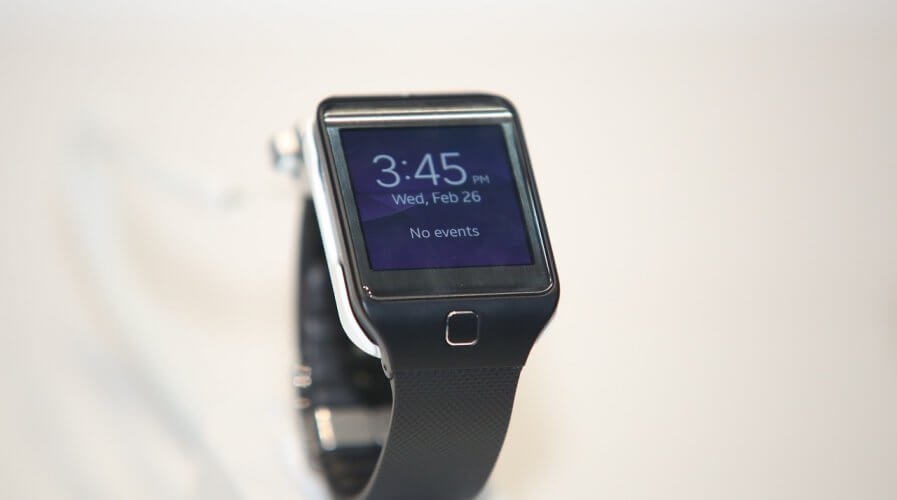
Consumers are beginning to see the value in smart watches and other wearables. Source: Pixabay
Wearables to rise again, sales set to touch 132.9m units in 2018
PEOPLE always seem to associate wearables devices with health and fitness, however, that’s not the only use for such devices.
According to Jitesh Ubrani, Senior Research Analyst, IDC Mobile Device Trackers, “Consumers are finally starting to understand and demand the utility of a smartwatch. At present, fitness uses lead by a mile but mobile payments and messaging are starting to catch on.”
Recent research by IDC forecasts that worldwide shipments of wearable devices should grow 15.1 percent in 2018, totaling 132.9 million units over the course of the year.
The overall market is also expected to deliver a compound annual growth rate (CAGR) of 13.4 percent over the next five years, culminating in 219.4 million units shipped in 2022.
WEARABLES:
Consumers say "WearableTech" will help us live longer, add to healthy living, reduce commute time etc. It is the future & is already changing lives dramatically.#Wearables #IoT #Online #HealthcareRevolution #HealthTech #WearableTech pic.twitter.com/WSItG1fDNZ— Uday Birje (@uday_birje) March 27, 2018
With cellular connectivity on the rise and shifting consumer preferences, IDC believes smartwatches will account for almost two out of every five wearable devices shipped in 2022.
“The addition of cellular connectivity is also starting to resonate with early adopters and looking ahead the emergence of new use cases like music streaming or additional health sensors will make cellular connectivity pivotal to the success of the smartwatch,” said Ubrani.
However, IDC points out that even though watches and wristbands will be in the spotlight, wearables in other form factors will still capture a minority share of the market and their share in the wearables market will continue to grow during the forecast period.
Earwear and clothing are expected to be the leading underdog categories as smart assistants slowly become indispensable and are incorporated into headphones and sensor-laden clothing for athletes and workers.
IDC believes that over the forecast period up to 2022, basic watches will grow at a CAGR of 16.4 percent as new vendors and fashionable designs drive the category forward.
However, the category does face challenges as vendors have struggled to educate users about the benefits of these devices. Many consumers still view these devices as timepieces rather than as wearables that are part of a larger ecosystem.
The low-cost, commoditized hardware of basic wristbands will continue to hold their place in emerging markets. These wearables are expected to account for 22 percent of all wearables shipped in 2022, down from 36% percent in 2018. However, IDC believes that the ease of use and overall accessibility of these devices positions them as the perfect starter device for the remainder of the wearables category.
Earwear wearables are forecast to ship 13.3 million units by the end of 2022 with a 48.0 percent CAGR from 2018–2022. With the rise of smart voice-enabled assistants, hardware developments from chip makers like Qualcomm, and the growing popularity of wireless headphones, IDC anticipates this form factor to be the most popular outside of wristbands and watches.
"The Future of Fitness Can Fit in Your Ear": https://t.co/xsXC1K5Jql via @wsj Wearable fitness tech is upon us! Would you wear any of these?#FitEngine #tech #fittech #fitness #wearabletech #technology #fitlife #workout #exercise #eartech #fitgoals #gym #technophile #nycfitness
— FitEngine Fitness (@Fitengine) March 14, 2018
Sensor-laden clothing is on track to grow from 2 percent share in 2017 to 5.3 percent share by 2022. To date, this category has been driven by step-counting shoes from the likes of Li-Ning and Under Armour that mostly caters to average consumers.
However, going forward, IDC anticipates other, niche brands to start gaining traction in sensor-laden clothing as they target professional athletes or enterprise workers in hazardous environments.
Finally, research indicates that lesser-known wearable devices such as those that can be clipped to different parts of the body or attached to the head like the Muse headband will maintain a very small portion of the overall market. And although the non-standard form factors will make these devices a tough sell to the mass market, their ability to cater to very specific needs may make them a somewhat lucrative business.
Live longer with Wearables! Consumers say WearableTech will help us live longer, add to healthy living, reduce commute times, pay less in insurance! https://t.co/CZPKarJ3p9 – @MikeQuindazzi #IoT #AI #BigData #Fintech #Insurtech #PredictiveAnalytics #Wearables #HealthTech #Tech pic.twitter.com/8kD1bW6XZL
— Gary Dower (@GaryDower) March 27, 2018
READ MORE
- Strategies for Democratizing GenAI
- The criticality of endpoint management in cybersecurity and operations
- Ethical AI: The renewed importance of safeguarding data and customer privacy in Generative AI applications
- How Japan balances AI-driven opportunities with cybersecurity needs
- Deploying SASE: Benchmarking your approach


